Info
Subfamily: Chloridoideae
Genus etymology: Tragus = honorific for Hieronymus Bock (1498–1554) whose name translates to Greek as Tragus (male goat)
Species etymology: berteronianus = honorific for Carlo Guiseppe Bertero (1789–1831)
Photosynthetic type: C4 (warm season)
Nativity: naturalized - accidental
First recorded in Hawaiʻi: 1935
Map

Inflorescence
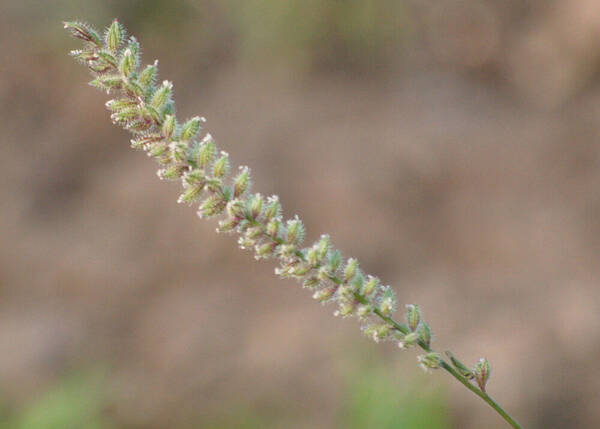
Plant
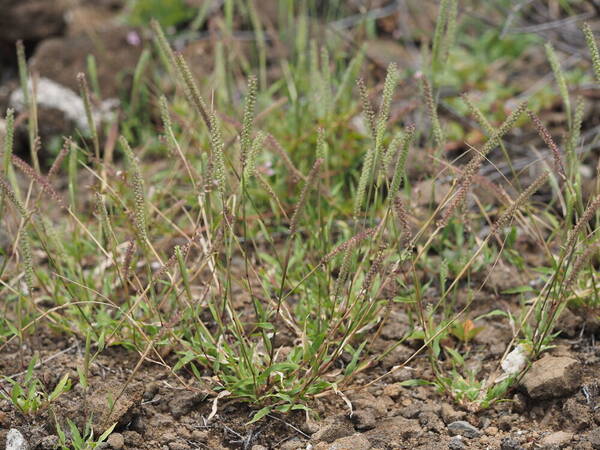
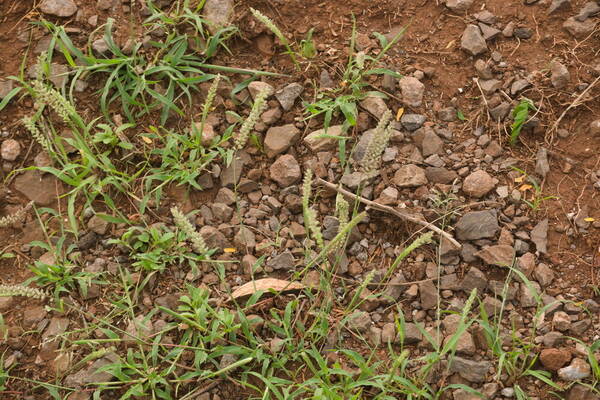
Habit
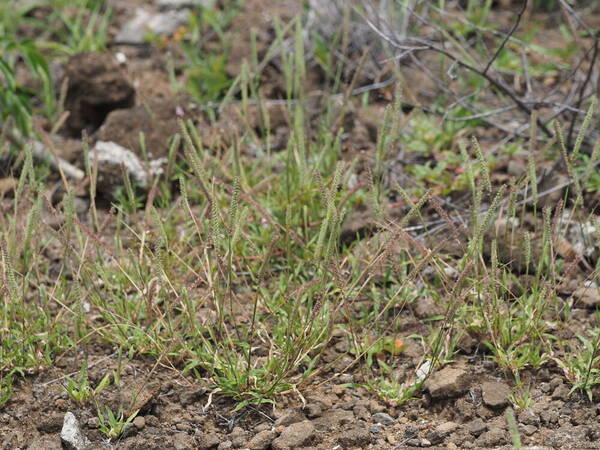
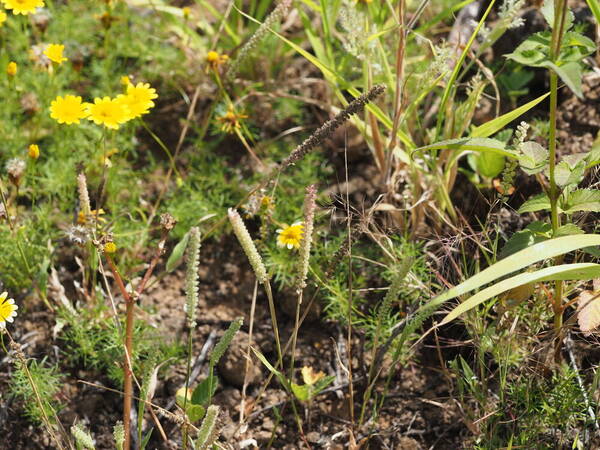
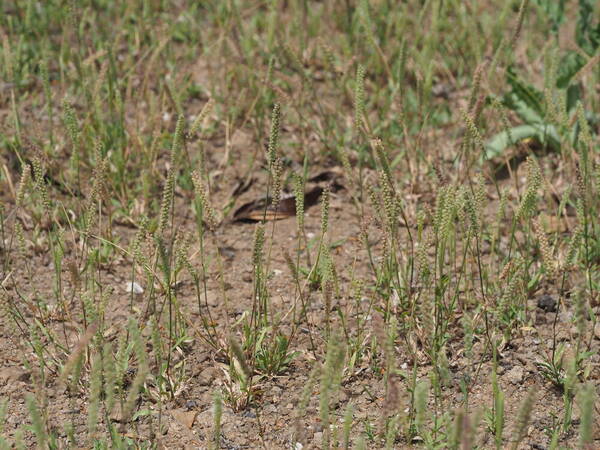
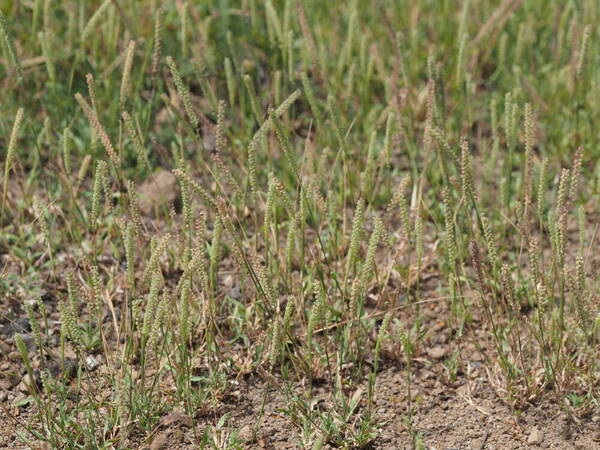
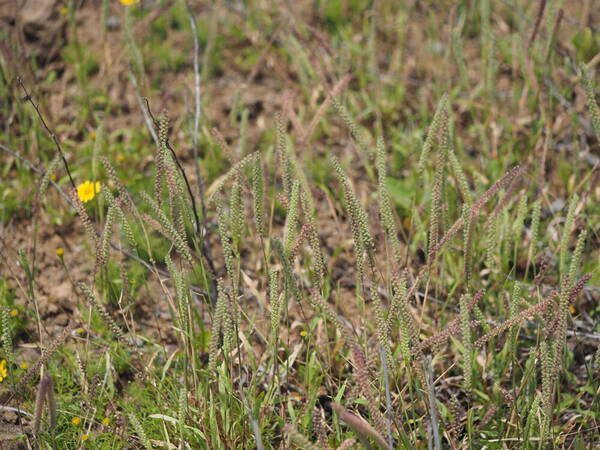
Spikelets
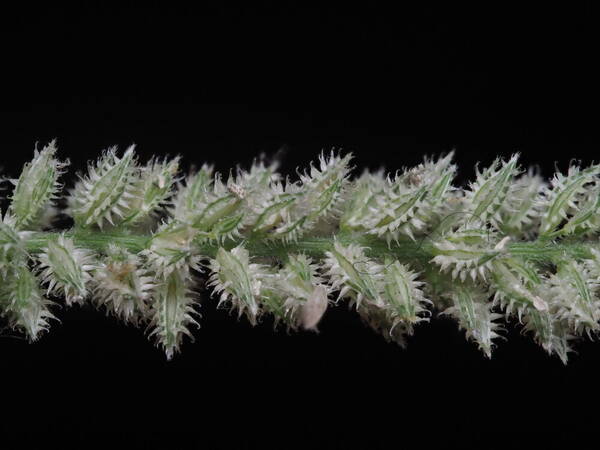
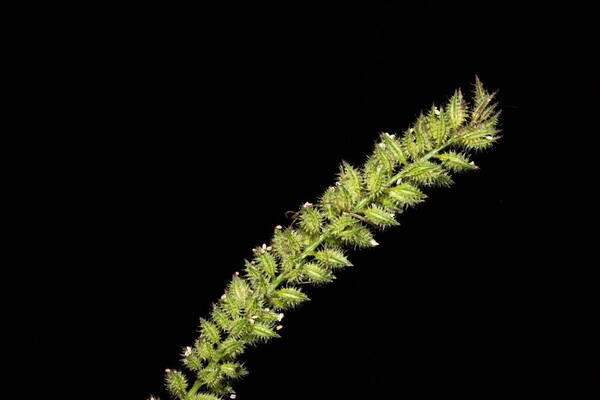
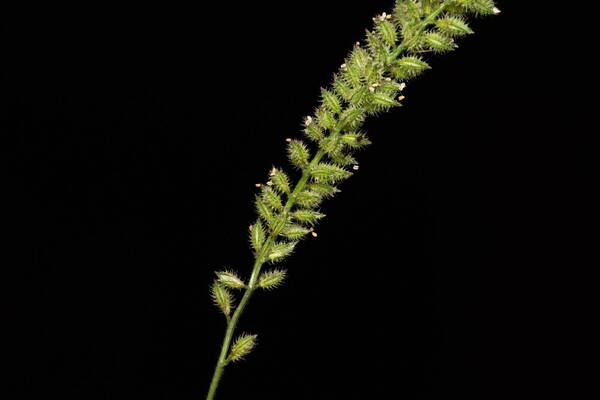
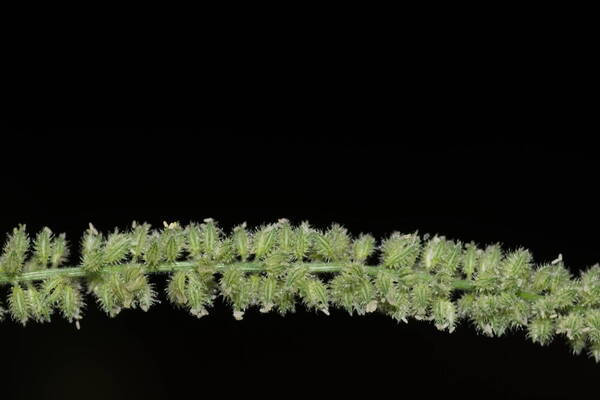

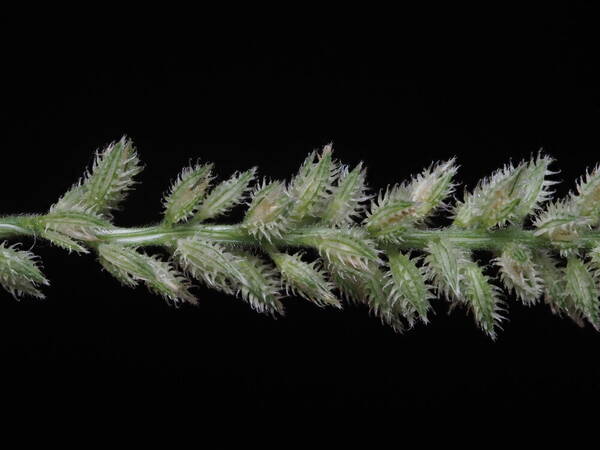
Collar
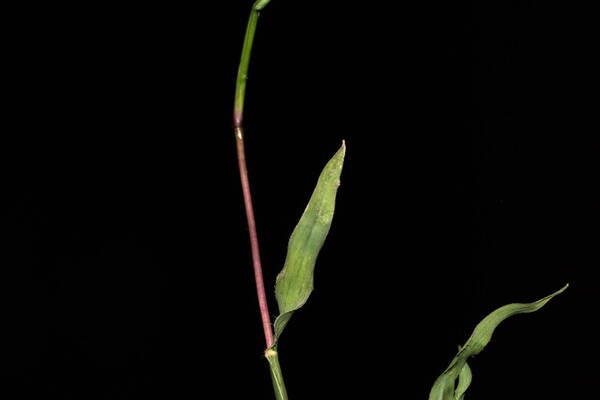
Description
Loosely tufted annual; culms 5–60 cm. high, erect or ascending. Leaf-blades 1–6 cm. long, 2–5 mm. wide. Inflorescence 2–15 cm. long, compactly cylindrical, congested; clusters plump, the tips incurved, comprising 2 spikelets of which the upper is smaller and borne upon a distinct internode 0.3–0.7 mm. long. Spikelets (lower) 2–3 mm. long; upper glume 5-nerved, the prickles turgid to bulbous in their lower half and hooked at the tip. Fig. 108.
(Description source: Clayton, W.D. 1970. Flora of Tropical East Africa. Gramineae (Part 1). Crown Agents for Oversea Governments and Administrations, London. 176 pp. )
Annual up to 20 cm high. Inflorescence 2–7.5 cm long; racemelets comprising 2 spikelets separated by a short but distinct internode, the upper shorter than the lower, the rhachis not prolonged. Spikelets 2–3 mm long, acute; upper glume 5-nerved, the prickles hooked and with turgid or swollen base.
(Description source: Cope, T.A, (1995) Flora Somalia, Vol 4. Royal Botanical Gardens, Kew, London. 312 pp. )
Annual up to 45 cm tall, erect or geniculately ascending; leaf laminas 1.5–5.5 cm × 2–5 mm, flat or undulate, glaucous, the margins thickened, whitish, pectinate with bulbous-based hairs or barbellate.Inflorescence 3.5–15 cm long, compactly cylindrical and congested; racemelets comprising 2 fertile spikelets borne on a short peduncle and separated by a distinct internode 0.3–0.7 mm long.Spikelets 1.8–3 mm long; superior glume prominently 5-nerved, the nerves bearing hooked, bulbous-based prickles, glabrous between the nerves; anthers 0.4–0.6 mm long.
(Description source: Pope, G.V. (ed). 1999. Flora Zambesiaca. Volume 10. Part 2. Kew, London. 261 pp. )
Plants annual. Culms (2)3.5-45 cm. Ligules 0.5-1 mm; blades (0.5)0.7-8.5 cm long, 1.2-5 mm wide, glabrous. Panicles (1)2-13 cm long, (3)4-8 mm wide; rachises pubescent; branches (0.5)0.7-2.7 mm, pubescent, with 2(3) spikelets, axes occasionally extending past the distal spikelets; proximal internodes 0.2-0.6(0.7) mm, shorter than the second internodes. Proximal spikelets (1.8)2^.3 mm; second spikelets (0.8)1-3.9 mm, some¬times sterile. Lower glumes 0.1-0.6 mm, membranous, minutely pubescent; upper glumes 1.8-4.3 mm, minutely pubescent, 5-veined, rarely with 1-2 additional veins adjacent to the midvein; glume projections (4)6-14, in 5 rows, (0.2)0.3-1 mm, uncinate; lemmas (1.5)1.8-3.1 mm, sparsely pubescent on the back, midveins occasionally excurrent to 0.6 mm; paleas (1.3)1.5-2.4 mm; anthers 3, 0.4-0.6 mm, yellow, occasionally purple-or green-tinged. Caryopses (0.9)1.2-2 mm long, 0.4-0.8 mm wide. 2n = 20.
(Description source: Barkworth, M.E., Capels, K.M., Long, S. & Piep, M.B. (eds.) 2003. Flora of North America, north of Mexico. Volume 25. Magnoliophyta: Commelinidae (in part): Poaceae, Part 2. Oxford University Press, New York. 783 pp. http://floranorthamerica.org/Tragus_berteronianus )
Annuals; culms erect or decumbent at base, 1-2.5 dm tall, pubescent. below racemes. Sheaths 1-3 cm long, glabrous, striate, the uppermost often dilated; ligule ciliate, 0.5-0.7 mm long; blades thick, firm, 1.5-2 cm long or the uppermost vestigial, 1-3 mm wide, margins undulate, cartilaginous, pubescent with stiff white hairs. Racemes 3-7 cm long, 4-5 mm in diameter, often enclosed within the uppermost Sheaths, rachis slender, pubescent; burs 2-3 mm long, beaked, pedicels pubescent, up to 0.5 mm long; spikelets 2 per bur; first glume absent, second glumes of the 2 spikelets forming the halves of a bur, convex, 3- nerved, the nerves bearing a row of stout hooked spines on either side; lemma ca. 2 mm long, apex acute, sparsely pubescent; palea 1.5-2 mm long, glabrous, apex acute. Caryopsis golden brown, 1.2-1.5 mm long. [2n = 20.]
(Description source: O’Connor, P.J. 1990. Poaceae, pp. 1481–1604. In: Wagner W.L., Herbst D.R. & Sohmer S.H. (eds.)., Manual of the flowering plant of Hawaiʻi. Vol. 2. University of Hawaii Press & Bishop Museum Press, Honolulu )